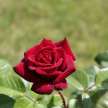
Porcupine
Porcupines are unique and fascinating creatures, known for their sharp quills that cover their bodies. These quills are not only used for self-defense but also help them climb trees and navigate their surroundings. In this article, we will explore more about porcupines, including their habitat, diet, behavior, and conservation status.
Habitat and Range
Porcupines have a wide range and can be found in many parts of the world, including Asia, Europe, Africa, and the Americas. The specific habitat of porcupines varies depending on the species, but they are generally found in forested areas, grasslands, deserts, and tundra habitats. Porcupines prefer areas with dense vegetation, such as trees and shrubs, which they use for food and shelter. Some species of porcupines, such as the North American porcupine, can be found in both mountainous and lowland regions, while others, such as the African crested porcupine, prefer savanna habitats. Porcupines are adaptable creatures and can survive in a range of environments, from the rainforest to the desert.
Diet
Porcupines are herbivores, meaning they eat only plants. They consume a variety of plants, including leaves, bark, and stems. Some species of porcupines even eat fruits, nuts, and roots. They are known for their ability to chew on tough materials, thanks to their powerful jaws and teeth.
Behavior
Porcupines are generally solitary animals, except during the mating season. They are primarily nocturnal, which means they are most active at night. During the day, porcupines rest in trees or in dens they create by burrowing into the ground. Porcupines are slow-moving animals and are known for their waddling gait.
Porcupines are herbivores and spend much of their time foraging for food. They consume a variety of plants, including leaves, bark, and stems. Some species of porcupines even eat fruits, nuts, and roots. Porcupines are also known for their ability to chew on tough materials, thanks to their powerful jaws and teeth.
When threatened, porcupines raise their quills, making it difficult for predators to attack them. The quills are also easily detached from their body, allowing the porcupine to escape while the predator is left with a mouthful of quills. Porcupines are generally not aggressive animals, but they will defend themselves if they feel threatened.
During the mating season, male porcupines will compete for the attention of females. They will engage in vocalizations, as well as physical combat, to establish dominance. Female porcupines give birth to one or two young, which are born with soft quills that harden over time. Young porcupines stay with their mother for several months before becoming independent.
Defense Mechanism
Porcupines are well-known for their quills, which serve as their primary defense mechanism. The quills are made of keratin, the same material that makes up human hair and nails. When threatened, porcupines will raise their quills, making it difficult for predators to attack them. The quills are also easily detached from their body, allowing the porcupine to escape while the predator is left with a mouthful of quills.
Conservation Status
Many species of porcupines are not currently threatened, but some, such as the African crested porcupine, are classified as vulnerable. The main threat to porcupines is habitat loss due to deforestation, agriculture, and human settlement. In some parts of the world, porcupines are hunted for their meat, which is considered a delicacy in some cultures.
In conclusion, porcupines are fascinating animals with unique adaptations. Their quills provide them with a highly effective defense mechanism, allowing them to survive in many different environments. As humans continue to encroach on their habitats, it is important to take steps to protect these amazing creatures.






Comments
There are no comments for this story
Be the first to respond and start the conversation.